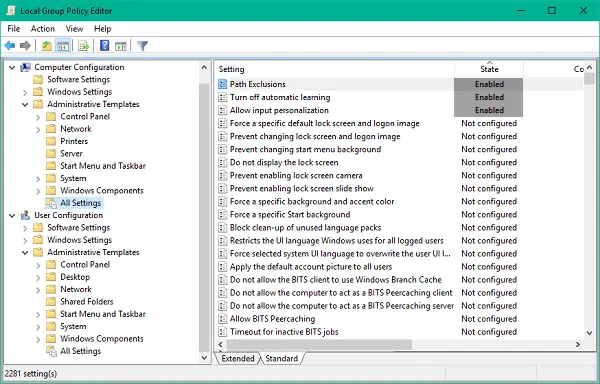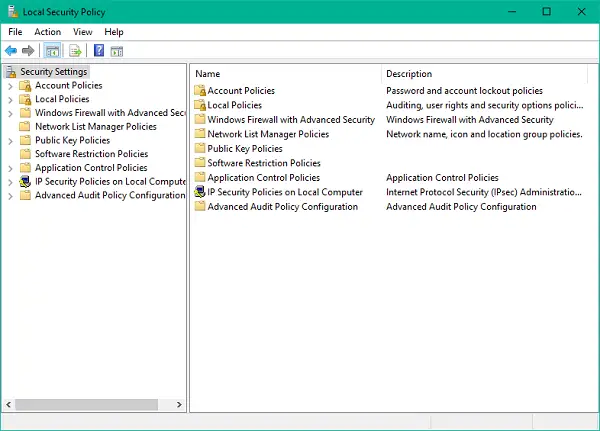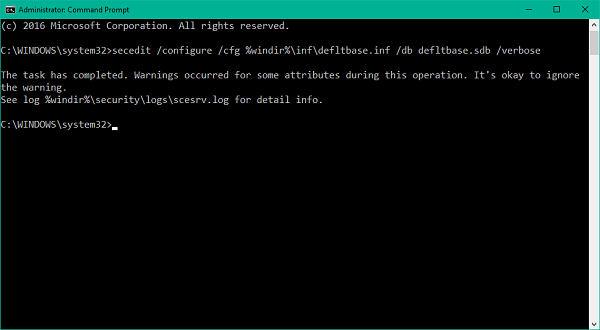The Group Policy Editor is an important tool for Windows OS, using which System Administrators can fine-tune system settings. It has several infrastructural configuration options that allow you to adjust the specific performance and security settings for users and computers. Sometimes you might end up tweaking your Group Policy Editor a bit further down the line and your computer starts behaving in an unwanted way. This is when you know that it’s time to reset all Group Policy settings to default and save yourself the pain of reinstalling Windows again. In this guide, we’ll be showing you how to reset all Group Policy settings to default in Windows 11/10.
Reset Group Policy to default in Windows 11/10
Group Policy settings can vary between several configurations like Personalization, Firewall settings, Printers, Security policies, etc. We’ll take a look at several methods using which you can reset the respective policies to their default state.
1] Reset GPO settings using Local Group Policy Editor
Now, this is a very basic one. Follow the below steps in order to reset the modified GPO settings.
1. Press Windows Key + R on your keyboard to launch Run prompt. Enter gpedit.msc and hit Enter to open Local Group Policy Editor.
2. Navigate to the following path on the left side pane of Group Policy Editor window:
Local Computer Policy > Computer Configuration > Administrative Templates > All Settings
3. Now, on the right side window, sort the policy settings by State column so that all those policies which are Enabled/Disabled currently can be accessed on the top.

4. Up next, change their state from Enabled/Disabled to Not Configured and apply the settings.
5. Repeat the same for the below path as well.
Local Computer Policy > User Configuration > Administrative Templates > All Settings
6. This will restore all Group Policy settings to the default state. However, if you are facing some serious issues like the loss of administrator privileges or being debarred from logging in, then you can try the below method.
Related: Group Policy settings missing in Windows
2] Restore Local Security Policies to default
Security policies about your administrative account on Windows are maintained in a different management console – secpol.msc (Local Security Policy). This security setting snap-in extends the Group Policy snap-in and helps you define security policies for computers in your domain.

Under certain circumstances, you might end up with messed-up Security settings, which you can set right if you have retained administrative privileges on your computer.
Follow the below steps to reset the Security policies on your machine:
1. Press Windows Key + X on your keyboard to launch Quick Link menu. Select Command Prompt (Admin) to open an elevated Command Prompt window.
2. Enter the below command in the prompt window and hit Enter:
secedit /configure /cfg %windir%\inf\defltbase.inf /db defltbase.sdb /verbose

3. After the task completion, restart your machine to make the changes effective and start afresh with Security policies.
4. If some of the components still appear strange, you can try the next method: hard reset the Group Policy Objects.
Read: How to Import or Export Group Policy settings in Windows 11/10.
3] Reset Group Policy Objects using Command Prompt
This particular method involves the deletion of the Group Policy settings folder from the drive where Windows is installed. Follow the below steps to get it done using an elevated Command Prompt window.
1. Open an elevated Command Prompt window the same way mentioned in Method 2.
2. Enter these commands in CMD and execute them one by one.
RD /S /Q "%WinDir%\System32\GroupPolicyUsers"
RD /S /Q "%WinDir%\System32\GroupPolicy"
gpupdate /force
3. Once done, restart your computer.
4] Delete these registry keys using CMD
You can also remove all settings and policies that may have been applied. Create a system restore point and backup your registry first and then run the following command/s:
reg delete "HKCU\Software\Microsoft\Windows\CurrentVersion\Policies" /f reg delete "HKCU\Software\Microsoft\WindowsSelfHost" /f reg delete "HKCU\Software\Policies" /f reg delete "HKLM\Software\Microsoft\Policies" /f reg delete "HKLM\Software\Microsoft\Windows\CurrentVersion\Policies" /f reg delete "HKLM\Software\Microsoft\Windows\CurrentVersion\WindowsStore\WindowsUpdate" /f reg delete "HKLM\Software\Microsoft\WindowsSelfHost" /f reg delete "HKLM\Software\Policies" /f reg delete "HKLM\Software\WOW6432Node\Microsoft\Policies" /f reg delete "HKLM\Software\WOW6432Node\Microsoft\Windows\CurrentVersion\Policies" /f reg delete "HKLM\Software\WOW6432Node\Microsoft\Windows\CurrentVersion\WindowsStore\WindowsUpdate" /f
Make sure you have created a system restore point before making any changes to your registry or policy settings.
Related read: How to repair a corrupt Group Policy in Windows 11/10.